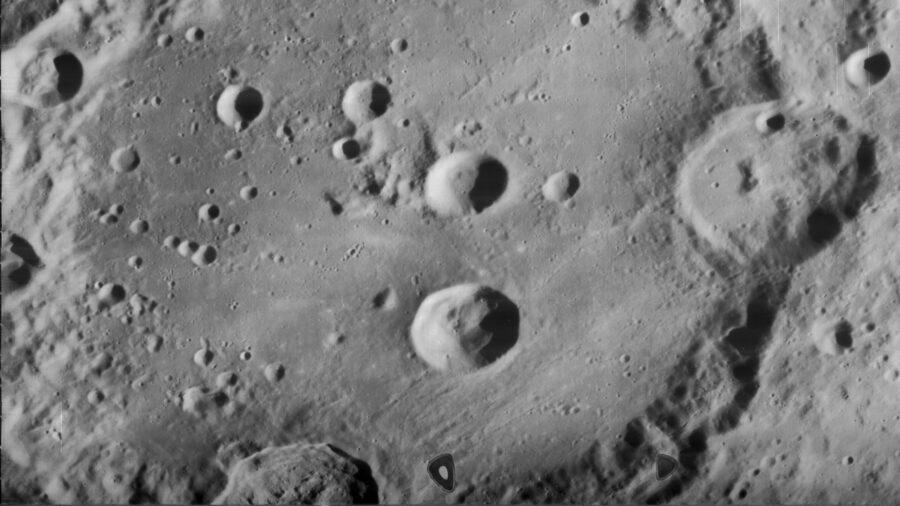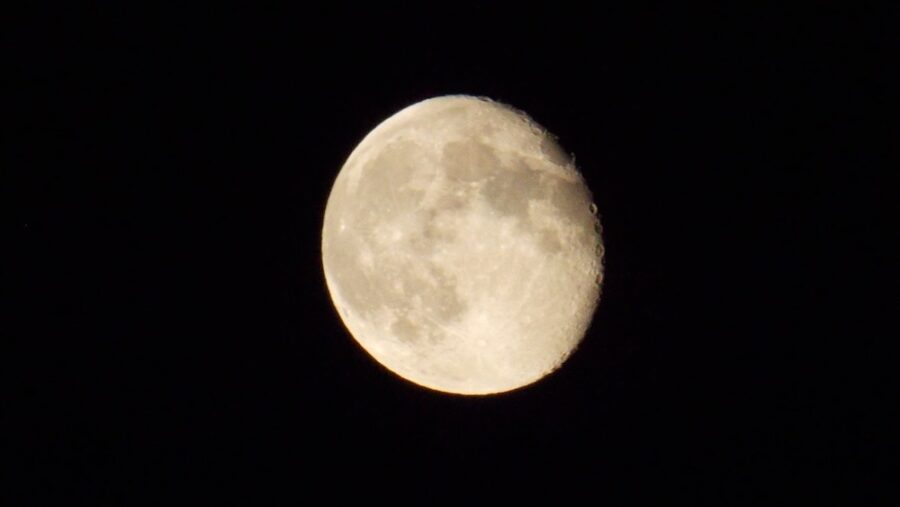Mysterious Force Making Water On The Moon

The Moon has long been considered devoid of water, but recent research suggests otherwise. Scientists know there’s ice on the lunar surface, but what’s remained unclear is where this precious resource originates. A new study has revealed that electrons from Earth and the Sun may be contributing to the formation of frozen water on the Moon.
The Magnetotail’s Role
As our planet hurtles through space, it leaves behind a trail known as the magnetotail. This tail, composed of a plasma sheet containing highly charged electrons and ions drawn from Earth’s atmosphere and the Sun’s solar wind radiation, extends out into space. The Moon occasionally passes in and out of this magnetotail, exposing itself to this unique environment.
Scientists have been closely examining the magnetotail and the larger magnetosphere’s potential role in the formation of water on the Moon. The magnetosphere is formed as Earth’s protective magnetic field deflects the Sun’s solar wind, leading to various phenomena in its wake. This peculiar setup serves as a natural laboratory for studying the processes behind lunar surface water formation.
“When the Moon is outside of the magnetotail, the lunar surface is bombarded with solar wind. Inside the magnetotail, there are almost no solar wind protons, and water formation was expected to drop to nearly zero,” planetary scientist Shuai Li from the University of Hawaii at Mānoa explained via Science Alert.
Interestingly, remote analysis suggests that water formation on the Moon doesn’t adhere strictly to these expectations. Previous studies have indicated that hydrogen ions from solar winds play a significant role in generating lunar water. However, recent findings suggest that water formation persists even when the lunar surface is shielded from solar winds within the magnetotail.

This revelation has led scientists to believe that other forces, particularly electrons, are at work. One hypothesis suggests that high-energy electrons could react with lunar soil, liberating trapped hydrogen that can then combine to form water molecules on the Moon.
Electrons from Earth and the Sun may be contributing to the formation of frozen water on the Moon.
“In the magnetotail, there may be additional formation processes or new sources of water not directly associated with the implantation of solar wind protons. In particular, radiation by high-energy electrons exhibits similar effects as the solar wind protons,” Li continued about water on the Moon.
While this discovery is groundbreaking, further observations and experiments on the lunar surface will be necessary to confirm the role of electrons in water formation. Nevertheless, this proposal is just one of many that scientists are exploring to decipher the origins of the Moon’s water. The question of lunar water’s origin holds immense importance for scientists.
“When the Moon is outside of the magnetotail, the lunar surface is bombarded with solar wind. Inside the magnetotail, there are almost no solar wind protons, and water formation was expected to drop to nearly zero.”
Shuai Li from the University of Hawaii at Mānoa
It not only provides insights into the Moon’s geological history but also has implications for the potential of long-term human habitation on the lunar surface. Water is essential for sustaining life, producing oxygen, and generating rocket fuel. Therefore, understanding its water sources is a vital step toward the exploration of our celestial neighbor.
Water was first discovered on the Moon’s surface in 2009, in permanently shadowed craters near the poles, where extremely low temperatures allow water ice to persist. NASA‘s Lunar Crater Observation and Sensing Satellite and Lunar Reconnaissance Orbiter played pivotal roles in this discovery. The Lunar Reconnaissance Orbiter has continued to detect and map lunar water.
India’s Chandrayaan-1 mission and other lunar exploration initiatives have further substantiated the presence of water on the Moon. NASA’s Artemis program aims to leverage these findings for future lunar missions, including human exploration. Scientifically, lunar water also sheds light on the Moon’s geological history and relationship with Earth and the solar system.












